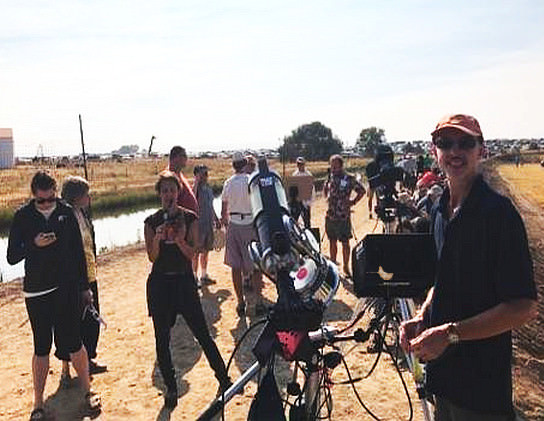- About
- Members
- Sponsors
- Subcommittees
- Technical Documents
- News
- Events
- Spotlight ATSC 3.0
- Contact Us
- Member Login
- Member Meetings
- Advanced Search
Search Site
Member Links
- About
- Members
- Sponsors
- Subcommittees
- Technical Documents
- News
- Events
- Spotlight ATSC 3.0
- Contact Us
- Member Login
- Member Meetings
- Advanced Search
Someone You Should Know: Aldo Cugnini
Posted on October 9, 2019 in ATSC News
 An electronics experimenting kit Aldo Cugnini received in elementary school kicked off his interest in radio, and he hasn’t looked back since. His first work in the industry as a summer-relief station engineer at WABC-AM and WPLJ-FM in New York is an experience he still remembers today.
An electronics experimenting kit Aldo Cugnini received in elementary school kicked off his interest in radio, and he hasn’t looked back since. His first work in the industry as a summer-relief station engineer at WABC-AM and WPLJ-FM in New York is an experience he still remembers today.
“In addition to the excitement of being a young nobody working with industry greats like Dan Ingram and Pat St. John,” Cugnini says, “it impressed on me how much my technical contributions could potentially and positively affect millions of people.”
Career Path and ATSC Involvement
Cugnini said his interests have taken him from broadcasting to the consumer side of content delivery, and he has also developed a “deep appreciation” for both law and politics on the way.
“Surprisingly,” Cugnini said, “an exposure to aspects of both areas [of law and politics] has helped me advance my career immeasurably.”
Currently a technology consultant, Cugnini is a veteran within the ATSC community, having been involved in digital for over 25 years going back to the ATSC 1.0 and the Digital HDTV Grand Alliance. Cugnini has been involved with ATSC 3.0 to support his clients while keeping abreast of the current developments in broadcasting technologies. His primary involvements center around applications layer technologies (e.g., audio, video, captions, interactivity) as well as redistribution via multi-channel video programmers.
Cugnini said ATSC 3.0 impacts the broadcast industry because it brings the latest video and audio capabilities into viewers’ homes using free over-the-air broadcast. “ATSC 3.0 brings true personalization to the broadcasting medium,” he said.
He added that 4K resolution, High Dynamic Range, and wider color gamut will continue bringing more lifelike video to the next generation of home video devices.
“Enhanced interactivity will not only make TV more personal,” Cugnini said. “It will provide broadcasters with many new revenue opportunities to effectively compete with other media.”
Staring at the Skies Outside of Work
 Cugnini, who is married with two children, has numerous interests beyond radio and technology—most notably, music and astronomy.
Cugnini, who is married with two children, has numerous interests beyond radio and technology—most notably, music and astronomy.
A musician for most of his life, Cugnini cited Milt Kabak, who had played in big bands with Stan Kenton and Louis Prima, as a great mentor for him in high school. Kabak helped Cugnini transfer his skills on the accordion over to the xylophone and vibes, after convincing Cugnini of the limited future of the “squeezebox.”
“I took to percussion enthusiastically, and developed an interest in the timpani,” Cugnini said. He said the timpani is a great instrument to make a statement when one feels lost in the crowd. Yes, that’s Aldo on the timpani in the photo (far right).
Cugnini also has fostered a lifelong love of astronomy and space. He said as a child, the Space Age was front and center in the press, especially with Kennedy’s push for a manned lunar landing. This fascination was noticed and encouraged by his father, “also a keen science nut,” who gifted his son several telescopes over the course of the years.
Cugnini’s interest has not waned over the years, either.
“A hands-on visit to any one of the world’s many optical astronomical observatories remains unticked on my bucket list,” Cugnini said.
Posted in ATSC News
News Categories
News Archives
Subscribe
Subscribe to The Standard, our monthly newsletter. Learn More
Join ATSC
ATSC is a membership organization with both voting and observer categories. Voting members include corporations, nonprofit organizations, and government entities, and they participate actively in the work of ATSC. Observers are individuals or entities not eligible to be a voting member.
Subscribe to our Newsletter
Subscribe to The Standard, our monthly newsletter, to stay up-to-date with ATSC news and events around the world.
Site Links
Contact Us
Advanced Television Systems Committee, Inc.
1300 I Street NW, Suite 400E
Washington, DC 20005
Do you have questions about ATSC?
About ATSC
The Advanced Television Systems Committee, Inc., is an international, non-profit organization developing voluntary standards and recommended practices for digital terrestrial broadcasting. ATSC member organizations represent the broadcast, broadcast equipment, motion picture, consumer electronics, computer, cable, satellite, and semiconductor industries. ATSC also develops digital terrestrial broadcasting implementation strategies and supports educational activities on ATSC standards.
© 2025 ATSC




































